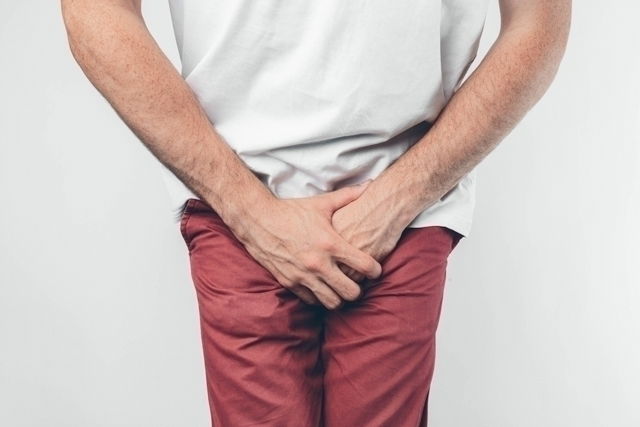Testicular pain is a symptom that can affect men of all ages and can be classified as acute or chronic. Acute pain is pain that appears suddenly and is temporary, lasting for a few hours or days. Acute testicular pain is usually caused by direct trauma.
Chronic pain, on the other hand, appears gradually and lasts for several weeks or months. It may be a sign of a more serious problem such as an inguinal hernia, varicocele, or chronic inflammatory processes.
In more rare cases, this type of pain could also indicate the presence of testicular cancer. However, with testicular cancer, pain is not commonly felt and is more often suspected due to the presence of a hardened node or lump.

The 7 most common causes of testicular pain are:
1. Varicocele
Varicocele is characterized by the swelling of the testicle veins. It occurs most often in the left testicle, but it can also affect only the right or both at the same time. This condition causes constant discomfort, swelling of the testicles, and a sensation of heat, especially after walking or engaging in physical activity.
How to treat it: in most cases, pain caused by varicocele is treated with analgesics like acetaminophen. However, if there is a risk of infertility or if the pain doesn't improve with the use of medication, a small surgery may be needed to "bypass" the affected veins and make the blood only circulate through healthy vessels.
2. Inguinal hernia
An inguinal hernia is commonly diagnosed in children and young adults. It occurs when a portion of the intestine, or other abdominal tissue, bulges through a weakened area of the abdominal muscles. It can enter the scrotum and causing constant swelling and pain. The discomfort worsens when getting up, bending over, or lifting weights, for example.
How to treat it: The only treatment available is inguinal hernia surgery, which allows for the portion of the intestine to be put back in the correct place. The abdominal muscles that are weakened are then reinforced.
3. Epididymitis
Inflammation of the epididymis, also known as epididymitis, can be caused by a bacterial or viral infection. Common symptoms include severe pain, swollen testicles, redness, and fever with chills.
How to treat it: You should seek medical attention for assessment. The infection may require treatment with antibiotics like ceftriaxone or quinolones (usually ciprofloxacin). The treatment duration may vary.
4. Testicular torsion
Testicular torsion is usually an emergency situation that is more common before the age of 25 and causes very intense pain. However, there are cases in which this torsion doesn't happen completely, resulting in more mild symptoms like pangs of pain that appear with certain movements.
How to treat it: If you suspect you have testicular torsion, you should proceed immediately to the emergency room to confirm the diagnosis. Surgery may be necessary to reposition the testicle to the correct place, which can prevent constipations like infertility.
5. Prostatitis
Inflammation of the prostate, known as prostatitis, usually causes symptoms like painful urination, fever, perineal pain, and a feeling of being unable to completely empty the bladder. Pain with palpation of the testicles may also occur.
How to treat it: A good way to relieve pain is to take a sitz bath with warm water for 15 minutes and do Kegel exercises to strengthen the pelvic floor. However, it is almost always necessary to also take prescription antibiotics, such as ciprofloxacin or levofloxacin.
6. Mumps
Although mumps usually affect the parotid glands, which are found on the side of the face, the virus that causes the disease can also make its way down to the testicles, causing inflammation. Therefore swelling and associated pain in the testicles is possible if mumps spreads systemically.
How to treat it: The doctor will usually recommend anti-inflammatory and analgesic drugs, such as ibuprofen or acetaminophen to treat symptoms. Staying hydrated and resting are also very important to eliminate the virus from the body.
7. Testicular cancer
Testicular cancer rarely causes pain; however, this may happen in more advanced cases. Other symptoms - such as intense swelling, changes in testicle size and lumps - will usually appear before, indicating that something is affecting the area.
How to treat it: Whenever cancer is suspected, you should see a doctor as soon as possible, as early diagnosis will improves your chances of a cure. However, the removal of the affected testicle is necessary in almost all cases of testicular cancer.
